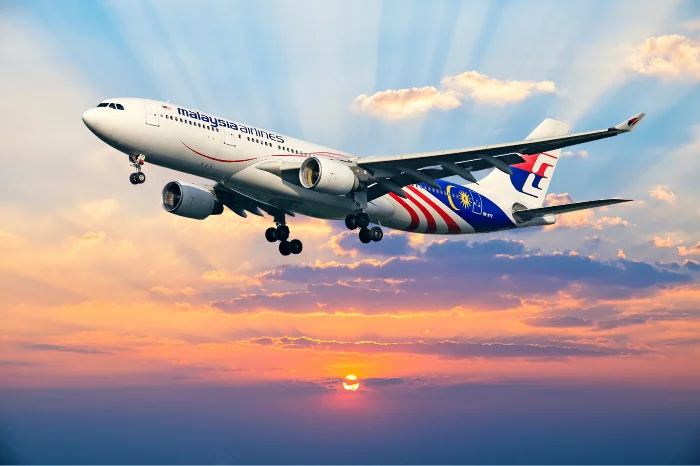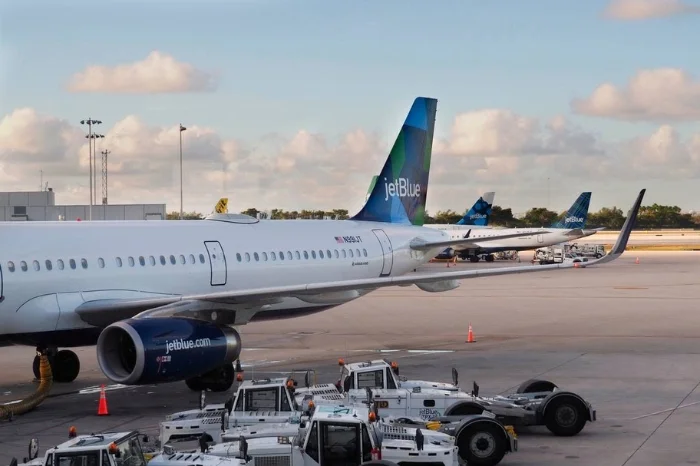- 23 May, 2024
In-depth guide to airplane turbulence: causes, types, and coping strategies
Unpredictably moving, unstable air is known as turbulence. Although it is frequently linked to storms, clear-air turbulence—which happens without obvious warning—is the most dangerous kind. Of all the meteorological phenomena that affect pilots, turbulence is one of the most unpredictable phenomena. The unsteady movement of air caused by eddies and vertical currents is known as turbulence. It could be as little as a few annoyances or as big as enough to cause structural damage or momentarily cause an airplane to lose control.
What causes turbulence?
Turbulence on a flight may be brought on by invisible rippling in the atmosphere, known as gravity waves. Pilots are only made aware of it by word-of-mouth from an experienced pilot. Pilots frequently heed the words of someone who has just flown the same route moments before.
How do pilots and cabin crew respond to turbulence?
Pilots hold the reins on any flight, and during any extremity or crisis, it is their sole responsibility to calm the passengers. They assert the authority to take control over the panic situation during turbulence and maintain confidence towards the passengers. Pilots tend to do the following in a turbulent flight situation:-
- The pilots make clear announcements about the situations and inform the actions to be taken.
- They study the weather forecasts.
- Maintain the fuel limit on the aircraft.
- The pilots monitor weather radar during the flight.
The cabin crew is the instantaneous help available for the passengers in case of any requirement. Additionally, the cabin crew must also take their measures for the flight.
What measures are to be taken in case of air turbulence?
Several measures and steps must be taken when the flight sees an air turbulence as a passenger. The steps to be taken are as follows:
- Wear your seatbelt at all times. Even if the sign is off, keep it fastened while seated for safety.
- To prevent spills and falls, store your belongings safely in compartments above ground.
- When there is turbulence, stay seated and refrain from moving around the cabin.
- Observe the guidance provided by crew members. They know how to handle turbulence, so pay attention to them.
- To stop loose objects or things from flying around, make sure they are securely fastened.
What Airline had severe turbulence?
Severe turbulence over the Indian Ocean on Tuesday caused a Singapore Airlines flight to fall 1,800 meters in three minutes, according to the carrier. A British man, 73, passed away after the Boeing 777 experienced extreme shaking. A minimum of thirty passengers were injured, and one passenger died as a result of the strong turbulence that caused Singapore to rapidly ascend and descend 400 feet in less than a minute. After taking off from London's Heathrow Airport, the Boeing 777-300ER was forced to make an emergency landing in Bangkok.
About ten hours into the journey, the plane encountered turbulence while passing over Myanmar's Irrawaddy Basin, a location notorious for its harsh weather. At 37,000 feet, the airplane carrying 211 passengers and 18 crew members experienced "sudden extreme turbulence," which caused it to plummet 6,000 feet in around three minutes.
A picture of the turbulent flight- A passenger named Andrew Davies said that initially, until the time when the seat belt sign was on. But it became intense when he saw blood gushing out from the heads of passengers on the seats behind him. Additionally, there was loud screaming. Many others were in need of assistance, but one man helped them carry him, remove him from the seat, and lay him on the ground so that some medical personnel could perform CPR. He was unable to live, nevertheless, and passed away during the 20-minute CPR rush.
Contact us










